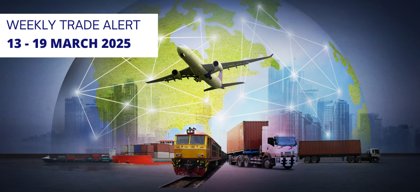Rise of ecosystems in Asia

Retail
311 week ago — 6 min read
Background: Asian markets with China, Korea, and India leading the charge are overtaking Europe and the US in terms of retail growth and digitisation finds Bain & Co.
Retail executives looking to understand the future of retail should be taking a close look at Asia, where dramatic changes are happening and retail is booming. Asia is leading in terms of retail growth, with growth rates at twice the rate of the rest of the world, and online retail growing at three times the rate. This is especially obvious in China, where in 2017 the online retail penetration was 20 per cent and its CAGR (13-17) was 33 per cent. In comparison, the US achieved an online retail penetration rate of 12 per cent in 2017 and a CAGR (13-17) of only 11 per cent. Most dramatic is India, which had a CAGR (13-17) of 53 per cent, highlighting the rapid growth seen in the market.
These conditions are giving rise to the retail ecosystem. Bain & Company’s latest Asia retail report, 'Future of Retail: Ecosystem Retail in Asia,' shows that these ecosystems are redefining consumer expectations and reshaping value chains, with significant implications for players in Asia as well as other geographic markets.
Rise of retail ecosystems
Retail ecosystems comprise vast communities of consumers, retailers and partners that are rapidly reshaping the retail landscape. Alibaba and Tencent lead the best known Asian ecosystems, however this phenomenon is not limited to China. For example, ecosystems are rapidly emerging in India, led by Reliance, Flipkart/Walmart, Amazon/ Future Group and Alibaba.
Ecosystems deliver a very sticky consumer proposition by combining services like e-commerce, chat, streaming, gaming or payments on a single platform or app, which is becoming almost universally adopted by shoppers. One example is Tencent’s WeChat which has one billion subscribers and is transforming the shopping experience in partnership with JD.com.
This large customer base is incredibly attractive to retailers as a channel to a critical mass of customers. But more importantly, the ecosystem also provides retailers with access to hard-to-replicate capabilities, such as last mile fulfilment, data analytics and cloud services, through their platforms. Increasingly, these ecosystems are deploying their capabilities into bricks-and-mortar retailers as well as online, meaning they can exert significant influence over the retail sector.
“What we’re seeing is the emergence of scale open retail ecosystem platforms across the Asia Pacific region, that offer retailers a compelling alternative to building and scaling their own capabilities,” said report author Melanie Sanders, Bain & Company partner. “The scale of these ecosystems means that we are seeing a battle emerge between ecosystem platforms in key markets, with the potential for a winner takes all situation”.
Geographic differences
The extent and pace of ecosystem development will not be uniform across geographic markets. Some market factors explain why ecosystems have developed so rapidly for some Asian countries. These include social factors such as urban density, age structure and retail market conditions such as the scale/maturity of physical retailers in the country.
The emergence of retail ecosystems is raising a new set of choices for retailers about how to participate in this new retail landscape. The emergence of these ecosystems presents huge opportunities for those playing to win in these markets. At the same time, they have the potential to completely change the rules of the game and may mean a loss of control.
“Retailers face a confronting set of choices around how to respond to the rise of retail ecosystems,” said Jonathan Cheng, report author and principal at Bain & Company. “At the heart of the decision will be whether the retailer has the capabilities, capital and customer franchise to compete against an ecosystem.”
As digitization of the retail sector continues to expand in Asian and global markets, ecosystems will continue to evolve based on the needs of both the consumers and retailers. By looking at the examples of what’s happening in each market, it is possible for global companies to adopt these platform models and prepare for the future of retail.
Five strategic options to respond to the rise of the ecosystem
- Play solo: Focus on building out a differentiated and competitive omni-channel model and do not participate in the ecosystem.
- Participate in the ecosystem: Utilize open ecosystem platforms and leverage ecosystem partner’s capabilities.
- Build your proprietary ecosystem: Build a proprietary ecosystem through partnerships, alliances and JVs with key external partners.
- Become the open ecosystem: Provide access to and monetise own capabilities, assets and infrastructure as an open ecosystem platform.
- Sell: Maximize shareholder value creation by seeking to be acquired, potentially by an ecosystem player.
Article source: STOrai Magazine
Disclaimer: The views and opinions expressed in this article are those of the author and do not necessarily reflect the views, official policy or position of GlobalLinker.
View STOrai 's profile
Most read this week













Comments
Share this content
Please login or Register to join the discussion